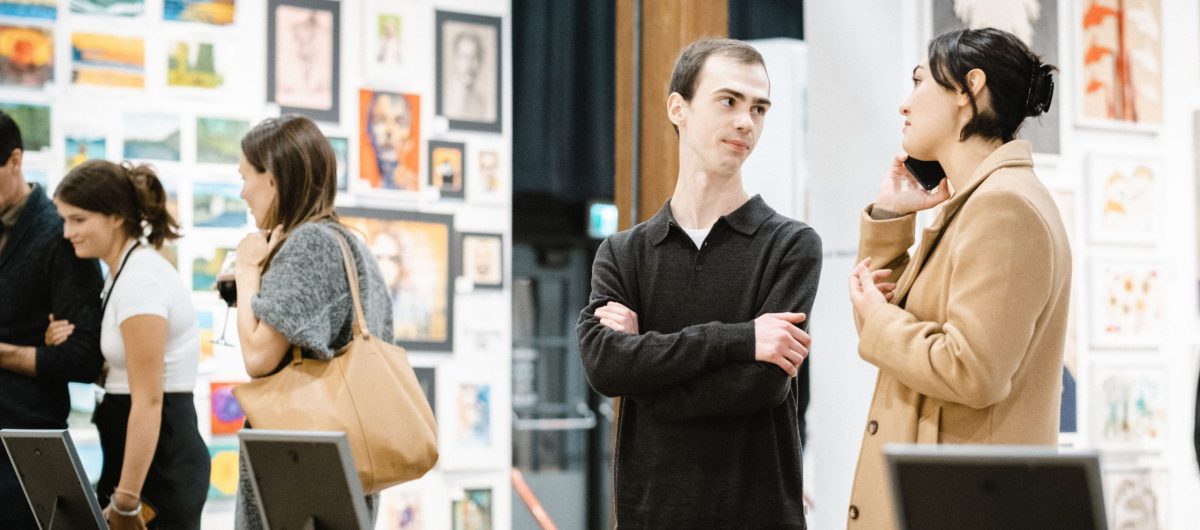How to write an Artist Statement and Artist Bio
The following document was created by Oli Salvas for the Vancouver Outsider Arts Festival in June 2023.
There are also videos by Oli Salvas prsented in 2022, you can watch the videos here
How to write an Artist Statement
How to write an Artist Biography
Artist Biography
- About You and not your art
- Similar to a personal biography for a resume but based on your art career
- Written in third person (example: They, she, he)
- Highlights your achievements
- Connects how your life events have influenced your artwork
- Includes information about you:
- where are you from? where are you located? what is your education? How did yo uget started in the arts
- Try to stay current with what you are working on. You can mention highlights in your career
- Should be longer than your statement without making it too lengthy (150 to 200 words)
- This will be a living document you will update throughout your career
Artist Biography: Elements to brainstorm
- Collect and organize any courses you have completed. Don’t worry about the years commenced or completed.
- Write down keywords that you would use to describe your influences and put these aside. These can be art styles, people or places.
- Write down why you do what you do as an artist, was it something you have known since you can remember? Was it a specific experience?
- Write down any key achievements you have had so far in your art career.
- Your name and where you live and where you typically work from?
- What styles or mediums do you work in?
ARTIST BIOGRAPHY SUGGESTED STRUCTURE
- Your name and where you live and where you typically work from
- Why you do what you do as an artist
- Those keywords that you used to describe your influences. The art styles, people or places.
- The styles or mediums do you work in
- The courses you have completed.
- The key achievements you have had so far in your art career.\
- What you are currently doing / presenting / showcasing
ARTIST BIO: YOU CAN…
- Add a picture (Optional)
- Provide links of showcases
- Provide where to purchase your work
- Add links of articles about you or your exhibitions
ARTIST STATEMENT
- About your art itself.
- Gives the viewer understanding of your practice.
- Communicates your story to the audience
- Not about your exhibition history
- Written at the first person (I)
- Used as a “substitute” for yourself when you are not able to be present to tell the audience what your practice is about.
- Try to keep it to around 150 words
- Why you have created the work and the history of the piece / collection
- Your overall vision.
- What you expect from your audience and how they will react.
- How your current work relates to your previous work.
- Where your work fits in with current contemporary art.
- How your work fits in with the history of art practice.
- How your work fits into a group exhibition, or a series of projects you have done.
- Sources and inspiration for your images.
- How this work fits into a series or longer body of work.
- How a certain technique is important to the work.
- Your philosophy of art making or of the work’s origin.
CONSIDERATIONS
- Who is your audience?
- What will it be used for?
- The tone you will choose for your artist statement will depend on the factors above.
- For example, an artist statement for a local art magazine you may choose to create something humorous to stand out but your artist statement may be more professional if this is
used for an academic paper. In the end, the core of your statement should be the same.
STRUCTURE OF AN ARTIST STATEMENT
•PART 1 (GENERAL INTRODUCTION)
- State what medium you work in
- Incorporate the what and why of your work.
•PART 2 (BE MORE SPECIFIC)
- Describe the materials, techniques and forms you use in your work.
- Briefly mention your artistic influences (Optional)
- Write about your art in general or a specific work. What makes your work unique? What excites you about your work.
- How your current work relates to your previous work?
- How your work fits into a group exhibition, or a series of projects you have done?
PART 3 : CONCLUSION
- Recapitulate the most important points in the statement
REVIEWING
Did I include?
❏ My medium
❏ My Overall vision
❏ The reason behind the creation of my work
❏ My Medium, artistic process, technique, and influences.
❏ Your current work’s relation to your previous projects (Optional)
❏ How your work fits with current contemporary art practice (Optional)

